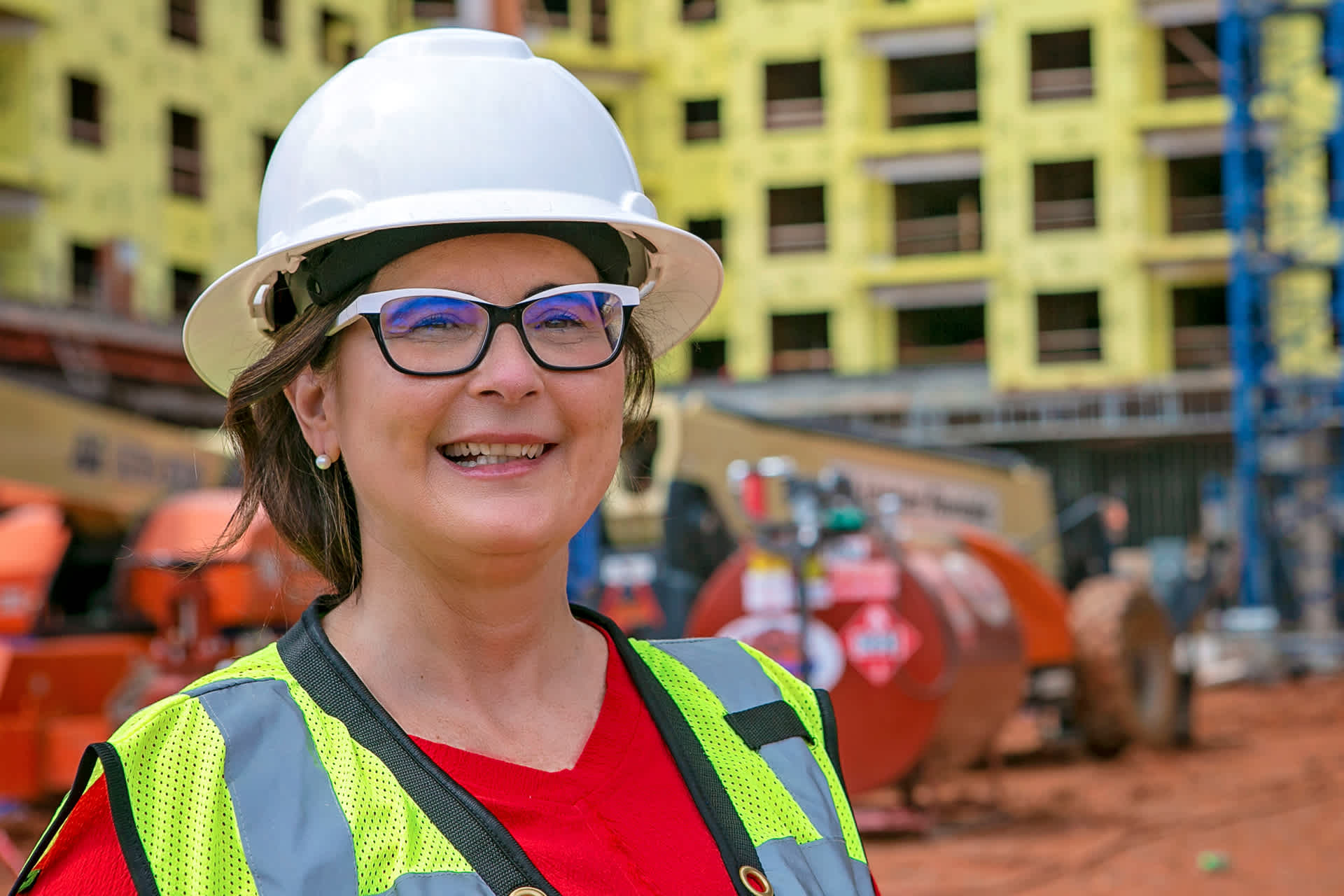Real Talk with Maria Houle

Maria Houle is Senior Project Executive at Gilbane Building Company, in Columbus, Ohio.
She has worked in the construction industry for 42 years.
Houle attended W.F. Kaynor Technical High School, in Connecticut. After that, she served for many years as a first sergeant in the United States Air Force Reserve, working as an aircraft radar technician. She chose construction as a career because its discipline and teamwork were similar to what she experienced in the military.
Houle spoke with YHJ about her day-to-day work as a construction project manager.
What does a construction project manager do?
I am responsible for the financial performance of a construction project: delivering the project on time, within a set budget, and with the expected level of quality. I hire the firms that perform the work and manage them throughout the construction project. I plan for how the equipment will arrive on the job, what roads the trucks will travel, which gates they will use as they enter the construction site. I oversee safety measures for the public and the workers. We are currently working on a high-rise building, so I organize all the vertical transportation—how material will get from the ground and up the 32 stories of the building.
What’s a typical day at work?
I report to the construction site at seven in the morning. We do a safety briefing on the site, so that the workers understand the risks of the day. Then I’ll go into the mobile office. I work on an iPad, where I can look at drawings of the building under construction. Occasionally, I will go out to check on the construction, making sure everything that's supposed to be delivered arrives and that the workers show up. I’ll also do safety and quality inspections. I’ll check in with the project superintendent, who’s directing things outside the mobile office. I spend more and more time outside the office as the project develops.
You’re working on a high-rise now. How many people are involved in getting a project like this done?
Our core staff is 12. These are the people who are on the three-year project from day 1. There are also people who are there intermittently, who do certain high-risk activities or specialized work. For instance, someone who works on the building structure is here for 18 months, then somebody else comes in and works on interior portions of the work, or specialty items in the building. There’s a virtual-design and construction manager, who takes aerial shots of the job, infrared scans, and puts together the building model. There’s a full-time safety person and a full-time medic, who help with the overall wellness of the workers. Someone else checks to make sure that we don’t have hazardous materials on-site. We have a team of estimators, who help us price the job to make sure the budgets are correct. Overall, the project will peak out at around 600 people, including the workers on the job.
What other projects have you worked on during your career?
Hospitals, federal buildings, prisons, college campuses, elementary and high schools, gymnasiums, and sports facilities. Our staff is LEED-certified. [LEED stands for Leadership in Energy and Environmental Design. LEED certification is awarded by the U.S. government, and means someone is an expert in sustainable construction and operations standards.] We monitor the carbon emissions of our construction equipment. We monitor construction waste. And we’ll monitor the overall wellness of the workers, and eventually, the wellness of the occupants in the building, through things like air quality and lighting.

You've worked for several companies over the course of your career. Why is that?
A lot of times, you outgrow the projects a company does. You want to go into a different specialty. Early in my career, I was a federal-government builder. As I got more into construction, I became interested in healthcare, and started building healthcare projects. That’s a different type of construction, with different funding sources and inspection requirements. That actually elevated my career. There were more opportunities in the healthcare business. And that put my job in high demand. Now I am working in development, and can have a little more fun in my career. A career can ebb and flow, depending on the type of work you do.
What are the biggest challenges you face on the job?
The challenge for me now is keeping people safe. How do you prevent people from making small mistakes that can easily escalate into a life-safety issue? Getting people to practice preventative measures day-to-day is always a challenge.
We also need to change the view that construction management is a blue-collar job. It is a professional business. And we need more women in it. There are a lot more opportunities for women in construction now than when I was starting out. I used to be one woman in a room of 40 men. Now you're seeing women in higher positions, which is amazing. But the number of women is still very low. There are high school students who do internships with us. Moms have come to me and said, “Look how tiny my daughter is. She'll never be safe on a job site.” And I say, “Look, I'm not that much bigger than your daughter. And I did it.”

